 |
||
|
||
| ||
ProcessorsThe not so hot summer '2001 comes to the end. Not so hot with news as well, we've seen some more saturated ones. Speaking about processors - without IDF, I am afraid, we could safely omit them. Let's begin with mobile processors, as the market of notebooks continues to develop confidently enough on the background of PC market stagnation. By and large Intel is quite satisfied with Pentium III-M (Tualatin), that begins to take the bread even out of Transmeta's mouth. And if we await 1.2 GHz Tualatin in the next quarter (that would become the limit of Pentium III-M potential in general), then the first half of '2002 will bring us 1.7 GHz Pentium 4-M. By the way, at IDF Intel has already showed a notebook with Pentium 4, though in 0.18 micron variant, but with 2 GHz clock rate - something unknown actually, as it is clear that such power consumption wouldn't allow any acceptable operating time. So the real mobile Pentium 4 will nevertheless enter the market with 1.5 GHz and in 0.13 micron variant. As to absolutely economic offers IDF was noticed by the Xscale announcement, the ARM processor from Intel, that has already appeared in silicon and will be offered to mobile phones and PDA manufacturers soon. And it was also noticed by Intel's Banias, developed from zero level, it's the next mobile processor of the company to be awaited at least for one year, but it stands for business: with 1.4 GHz and higher clock rates (actual 1.4 GHz, unlike Pentium 4 - Banias architecture is closer to Pentium III here) the processor should show just miracles of profitability. It's not Itanium, that disseminates up to 130 (!!!) Wt of heat with it's 0.18 microns - fans occupy up to two thirds of servers' size on it. And the most unpleasant is that McKinley (220 million transistors!), not too distinguished from Merced by means of architecture, will be made on the same 0.18 micron, so the companies, wishing to proceed to 64-bit processors from Intel, should install as many conditioners for server halls as refrigerators. Or to wait up to '2004 when Intel passes on 0.10 micron. 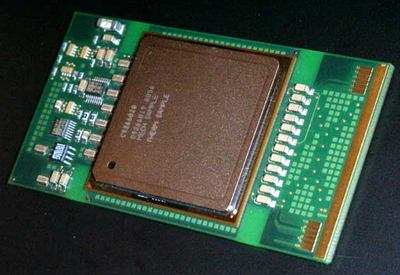 Not going beyond Cascades, Pentium III Xeon this time, as Intel has just announced the return of 900 MHz version of the processor with 2 Mbytes of L2 cache, cancelled due to heat-evolution problems before. Certainly, it is possible to try 2 GHz Xeon (Foster), but we'd have to wait for it as well, as Intel has announced at IDF, that the release of the processor is moved by three months (it's about the server variants, designed for 2-4-processor configurations). By the way, there will be Hyper-Threading, a new Intel's multithread technology, announced at the same IDF, that parallels the performance of several application on the processor with more optimality, allowing to raise productivity by up to 30 percents. Well, that's not surprising - the correct application of SSE, for example, allows to raise it by up to 80 percents. 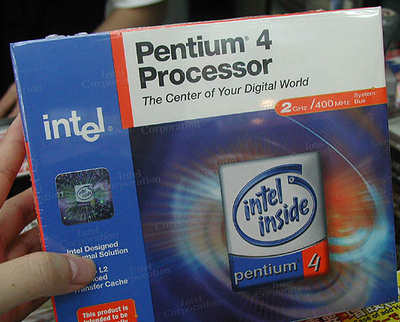 Though originally this technology will appear in server processors, Intel promises to support it also in desktop PC processors later. It might still be Pentium 4 or it might be something different. By the way, it's time to proceed to Pentium 4 itself at last - as at IDF Intel for the first time has broken through 2 GHz barrier for average level processors, having released 1.9 and 2.0 GHz Pentium 4 variants, though still with 0.18 micron technology. Thus prices for the previous models lowered more than appreciablly: e.g. Pentium 4 1.5 GHz has fallen in price from $256 down to $142! It is possible, that 2 GHz Pentium 4 would become the last 0.18 micron processor from Intel - the work over further improvement of all Intel's 0.18 micron processors was completed on the August, 15 (including 850 MHz Celeron and 1.1 GHz Pentium III), and on the October, 12 Intel stops to accept orders for them. And there are reasons: 2-2.4 GHz Pentium 4, based on 0.13 micron technical process (with 512 Kilobytes of L2 cache, by the way) will appear for sale in November - December, and 0.13 micron Tualatin Celeron is already being released by Intel. In this situation there's just no place for Pentium III: the prices for Pentium 4 continue to fall at steadily growing speed - we should already see 3.5 GHz Pentium 4 next year, which samples were shown at IDF already, whereas Celeron might "blow up" to 1.2 GHz at the end of October. It's all about Intel, as there was IDF at the end of August. Other companies, not having carried out anything similar, have very little to show. But, nevertheless. 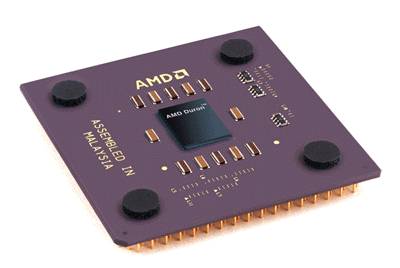 The release of a processor with a new core became the main pleasure for AMD in August: new 1 GHz Duron with Morgan core is, certainly, not a 1.5 GHz Athlon with Palomino core, but, nevertheless, it's something. As mobile 1.1 GHz Athlon 4 and 900 MHz Duron were released on the same day. By the way, AMD has set up a small record: today it owns the cheapest 1 GHz processor - a new Duron costs just $89 (1 GHz Athlon costs $115 after the decrease of prices at the end of the month). As to Palomino, we'll have to wait for a month up to the end of September when it will be released with clock rates from 1.3 up to 1.5 GHz. By the way, it is interesting that AMD has already reserved a 18X multiplier for Palomino, that gives us 2.4 GHz potential in case of 18x266 MHz. Though even this fact will hardly force IBM to return to the releases of desktop PCs on the basis of AMD processors: IBM's corporate clients demand Intel processors, and a competing line of Athlon and Duron would just mean the expensiveness of the manufacture, that has became the reason for IBM to cancel sales of such PCs. Actually IBM has never been too enthusiastic about models on these processors anyway. And AMD itself has announced the cancellation of K6-2 manufactures - the company will now offer mobile Duron to the clients instead of that processor, recently used only for industrial built-in computers. As to Hammer, though, according to hearings, AMD has its samples already on hands, only some detailed description will be announced at MicroProcessor Forum in the middle of October, including descriptions of instruction sets, size of the pipeline, cache, etc. So Intel may rest quietly with its server processors for a long time. As now it has became easier for Itanium as well - after Alpha absorption by Intel, API NetWorks, the only customer of Alpha processors from Samsung and IBM, has announced about finishing all projects in this area and closing of this processor division - Alpha, being the processor with a long history, has not long existed at Compaq. However, Compaq is not guilty - Silicon Graphics has already got rid of MIPS, and Hewlett-Packard will bury its PA-RISC in the near future already. Motherboards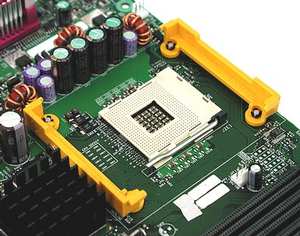 Like the previous section, the whole month was marked by Intel sign - i845 was an undoubtful hit and was in great demand among manufacturers of system boards. Intel has started mass production of this chipset on Taiwan in the beginning of August and announcements of various boards had started to appear much earlier. Just look at the small list of names of some manufacturers who have announced their models on this chipset: Asus, DFI, Intel, Supermicro, EPoX, MSI, Gigabyte, AOpen, ABIT, Soltek, Chaintech, Biostar. Yes, there are problems: deliveries won't satisfy everybody in the beginning, and the prices are high - all this obviously pushes second - third level manufacturers to VIA's camp with its P4X266, in addition, Intel itself has set up such rules, having set the price for i845 boards to about $90. That automatically forces manufacturers like ESC to set the price for their products to about $80, that makes this combination quite competitive in comparison with Athlon/KT266, taking into account SDRAM prices, which have fallen below any possible level, and not so high prices for Pentium 4. Though now prices for these boards are nevertheless much higher than hundred dollars, closer to $150, than to $100. But, as it's known, all will be balanced after the official announcement of the i845 chipset. It seems that when deliveries of i845 boards with DDR support begin, their starting price will be already in the same range or even little lower. And deliveries will begin soon enough - Intel is going to start mass deliveries of this chipset in the fourth quarter, so that in the first quarter the releases of these boards would become really popular. One may be sure it will be so: DDR chipsets for Pentium 4 are simply necessary for the market, but there will be enough P4X266 and SiS640 boards by that time already. And not only them. ALi at the last moment announced its Pentium 4 chipset, ALADDiN-P4 M1671 - with PC2700 DDR support (like that of SiS) and with the promise of starting mass deliveries in October, 2001. In general, it is necessary to note the fact, that chipsets for Pentium 4 are obviously advancing faster then expected: they should have been released in September, but as a result both SiS640 and P4X266 were announced already in the first half of August. And also mass production of the both chipsets will start not by the end of this year as it was expected, but in September. Besides, later in the fourth quarter, A4 chipset from ATI will be announced, which will become already the fifth Athlon chipset and the second with the built-in graphic core, and the best of all possible, by the way - the just announced Radeon 7500! Though there will also be AGP 4X slot, certainly. Though, the memory bus of this chipset is 64-bit, whereas NVIDIA's nForce is said to have 128-bit one. However, nobody's seen these chipsets yet, so it's still early for conclusions. 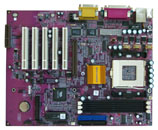 And P4X266 has started its activity even as motherboards, at least announced: P4VXMS and P4VXAS from ESC, P4X2-AD and P4X2-AV from AZZA. Pay your attention: not so brand manufacturers (especially ESC) were the first to do this. Grands like Gigabyte, ASUS or MSI are obviously afraid to step on this unsteady ground though all large manufacturers have samples of such boards at their labs. The situation is really uncertain: the chipset is obviously necessary and is bound to become widely popular, it's not worse than Apollo Pro133, but Intel's position remains certain enough: this chipset is illegal, it breaks Intel's patents, and just "don't touch it or you'll be sorry", even without any actions in court (where Intel, by the way, doesn't hurry up to). But! Two years ago Intel could allow itself such attitude to Apollo Pro133 (and motherboard manufacturers remember well that despite all Intel's threats almost nobody has suffered that time). And it's not a joke now about the manufacturer who has 50 percents of the chipset market - as VIA asks less money for a Pentium 4 chipset with DDR SDRAM support than Intel does for SDRAM chipset for the same processor. In such situation manufacturers of the second and third echelon may refuse Intel's i845 as well, and brand manufacturers will just have no choice. And VIA may obviously offer more in the foreseeable future - already in the end of this year / in the beginning of the next year the deliveries of P4X333 samples with PC2700 DDR support, integrated P4M266 and P4M333 and integrated chipsets for Athlon - KM266 and KM333 begin. KT266 is being actively produced already so there won't be plenty of announcements for it: SOYO had released new variants of boards on it before Soltek, and that was all for August - all interesting things had already been announced earlier. The following stream is expected right in September, when there will be a new KT266A version, faster than the original by 10 percents, due to the improved memory controller (a traditional weak spot of VIA chipsets). 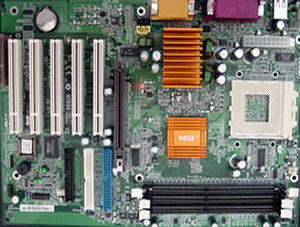 The second pleasant moment for AMD processor users is SiS 735, having stable popularity among motherboard manufacturers: Shuttle, MSI, Leadtek - the manufacturers who have released boards on this chipset only in August. However, there's a problem: as it was found out, the current SiS 730 does not support 266 MHz FSB. So the owners of new Athlons, interested in having a motherboard on this chipset will have to wait for SiS 730 stepping B1 in September. There's just a single one left from a society column: PCI Special Interest Group (PCI SIG) voting about 3GIO/Arapahoe - a next generation I/O bus, that has been ratified by this group at last as the successor to PCI. Though it will appear in PCs not earlier than '2003-2004 so HyperTransport may quietly strengthen its market positions. MemoryThe list basic themes is usual: the prices for memory, DDR, RDRAM. And nothing basically changed in tendencies: memory becomes cheaper and cheaper, DDR is still promoted and Rambus's problems still remain. 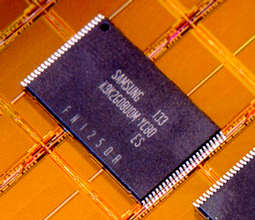 The average wholesale prices for 128 MBit PC133 SDRAM have fallen approximately from $3 down to $2.3 for one month, and modules have remained at the approximately same level, having remained at one place for the whole month: the wholesale prices in the TICE open market (Taiwan) for 512 Mbyte PC133 modules has fallen from $51.5 down to $51.25, for 256 Mbyte ones - from $24.8 down to $23.7. It might seem that prices are at the bottom and can't fall any further - and whether some manufacturers will leave from market or whether they will agree to control the prices, or maybe the technical process improvement will raise the manufacture volumes and thus will drop the prices? Impossible to predict now. And the current prices languidly decrease now, especially for DDR, that rapidly catches up SDRAM: Crucial had time to drop DDR SDRAM modules prices twice in August, having set the price for 256 Mbytes PC2100 DDR module down to $37.8! No analytics could predict such DDR prices a year ago. But nevertheless! Whereas manufacturers basically intend to present PC2700 chips already in the fourth quarter of this year and to start mass production in the first half of the next, someone's ahead of the whole planet - Samsung and Nanya had already time to announce the beginning of mass production of such chips. On the one hand this memory is obviously more expensive than PC2100 at approximately the same cost price, as it is designed for highly-efficient PC and server market, on the other hand very few chipsets support PC2700 now, and to the moment of their mass distribution other DRAM manufacturers will master full-scale production of this memory type and consequently, the prices for it will fall as well. And manufacture volumes are being continuously increased: in August Hynix has doubled the manufacture volume of DDR SDRAM chips, Nanya has continued to increase the manufacture, investing in proceeding to 0.14 micron technical process, and in the beginning of the fourth quarter Mitsubishi will already start manufacture of 0.15 micron DDR chips. So prices will continue to fall, despite the desires of DRAM manufacturers. Well, nothing to say about Rambus in general - the share price of the company has fallen below the initial level for one month, the judge has offended it, having deprived of any hopes of snatching something as the commission from SDRAM chips, and having also demanded to pay 7 million dollars to Infineon as legal costs, though he has also given a hope in DDR area. Nevertheless, hard times await the company - easy money lovers such as offended investors have attacked the company, considering that Rambus itself is guilty in its losses. Still there are some positive moments: the beginning of mass production of Samsung 0.15 micron RDRAM chips, and also hearings that some chipset manufacturer will release a product with RDRAM support. 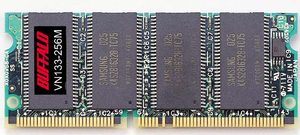 It is necessary to note a serious turn to the mobile market and the market of 1U/2U servers as main tendencies: for just one month SimpleTech has announced 2 GByte low-profile ECC SDRAM modules, Kingston - 128 and 256 Mbyte PC133 SO-DIMM, Melco - 256 Mbyte SO-DIMM, Infineon and Hynix - low-profile 128 Mbyte - 1 GByte PC133/PC1600/PC2100 modules. Manufacturers show enviable mobility in search of profit, in the conditions of the fallen demand for usual products. And again just the single one left in the society column: Advanced DRAM Technology has showed itself again. Its founders, according to semi-official hearings, are going to make it the open standard within JEDEC. Work goes on and, probably, the next year we'll hear some official confirmations of a specification in JEDEC. The last unmentioned event is the intention of Toshiba to give up DRAM business and sell the appropriate division to Samsung or Infineon (Winbond already withdraws its experts from the joint development centre). Video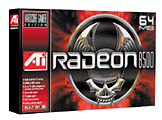 The unconditional hero of the month is, undoubtedly, ATI, having released its R200 (or Radeon 8500, as it was found out in the middle of August) at last after so many months of the expectation. More precisely, August also brought some news about Radeon 7500 (former RV200) and about Radeon 8800 (a good old FireGL 4), and later - even about Mobility Radeon 7500 (the same RV200 with some other drivers, taking into account its orientation), and also ALL-IN-WONDER RADEON 8500DV was announced at the end of the month (but it just should have been announced as the reaction to NVIDIA's Personal Cinema platform, announced three days before). Meanwhile, videocard manufacturers have accepted new ATI chips without special enthusiasm, not having presented any model on them. Hercules, for example, has just said that it doesn't plan anything similar at present, but Hercules has recently tied itself to STMicroelectronics and its KYRO. And the others, including ATI's largest recent ally, DFI, keep silence, except for maybe the release of DFI Radeon 10 in August on the base of Radeon VE. Well, the demand manages the production, Radeon 8500 might be the next. 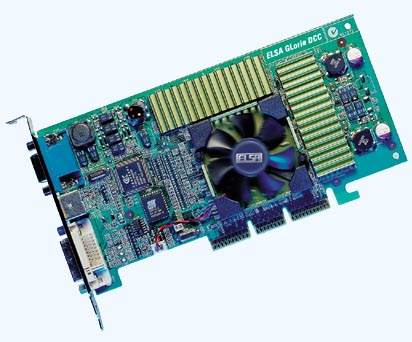 As always, cards on NVIDIA chips dominate the market, from MX200 cards from anonymous manufacturers to professional Gloria DCC from ELSA for $1000. Well and, certainly, everything that in the middle with overweight to MX400 that's quite clear. 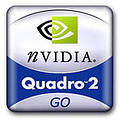 However, though I usually grumble about releases of cards on old NVIDIA chips and about the absense of anything new from the company itself, this time there's something. Keeping silence in the main area, as nothing follows GeForce3, NVIDIA managed to invent a new class of notebooks, "a mobile workstation", and announced a 0.18 micron (thank God, not 0.25!) Quadro2 Go core (GeForce2 Go with special drivers). An interesting, but terribly narrow product, and hardly someone except Fujitsu Siemens will release notebooks on it. The second product - NVIDIA Personal Cinema - presents the next attempt of answering to All-In-Wonder and Marvel. One takes MX 200, 400 or GeForce3 card, attaches video in/out and supplies it with a remote control. Without the last thing it's the same ASUS V7100 Combo Deluxe, released ages ago. ASUS hasn't even announced anything on Personal Cinema, so VisionTek had to do it instead with Xtasy Xcess 5564 on MX 400. Though NVIDIA has not presented anything really new lately, nevertheless, it goes perfectly well in the financial aspect: last quarter brought NVIDIA an additional 37 million dollars, thus the company has earned 91.7 million already for the last half-year. 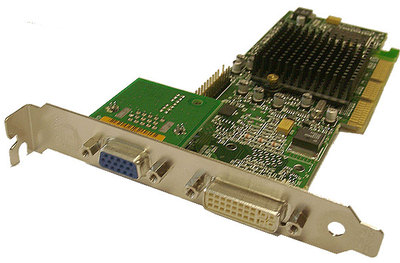 There are no chances to expect something new from Matrox in general, however, what should one wait from a company, that produces a solution, worse than MX200? Matrox has completely left the retail market, having concentrated on OEM deliveries with its Millennium G550 - a rather middle-level card with a little bit overestimated price for its characteristics. I shall even predict, that Matrox won't raise any higher than G550 any more. Storage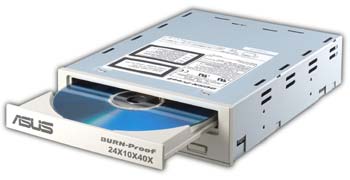 CD-RW drives are usual leaders in the quantitative aspect. Traditionally here's one tendency - the amount of models with latest controllers grows more and more, with occasional additions of those that were actual several months ago. The same is here again - an obvious prevalence of 24/10/40 CD-RWs, sometimes strangely "diluted" by rarities like CD-RW Blaster 161040, announced by Creative. As to interfaces: ATAPI is the internal leader and USB 2.0, the latest fashion, leads externals. Every second model (if not the first) of external CD-RW drive is announced with the support of this interface. The second is, accordingly, FireWire, as USB 2.0 now supersedes USB 1.1 more. 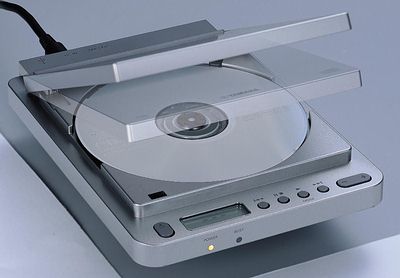 And there are more and more rewriting combos - the very High-End in this area, allowing to work both with CD-RW and DVD+RW disks, goes from Philips and Ricoh - these representatives of DVD+RW camp advance this standard very competently. They don't forget the "pure" drives as well - DVDRW208 and MP5120 from Philips and Ricoh will be for sale in October, HP dvd100i is also already announced and will be for sale in September. 9.4 GByte DVD+RW disks for them will be naturally produced by that time by Philips (4.7 GByte variant is produced already). By the way, DVD-RAM 9.4 GByte disks are already for sale for the price of about $40. Speaking about disks for CD-R/CD-RW drives, manufacturers now start to produce disks, designed for 24X recording and 12X rewriting, and they wait for prices to increase by 15 percents in the near future. Finally to end this theme, I'll mention the multilayer recording technology, offered by TDK in cooperation with Calimetrics. I shall remind that the technology allows to increase disk volumes approximately by three times without any mechanical or optical changes in today's drives - just a small chip and, naturally, other disks. By the way, recording speed grows as well, and 36X is the beginning. Probably, Plextor will become the first manufacturer of such drives with its PX-ML3630, which might be released in December. Most likely it would be followed by Yamaha and Sanyo, also supporting this specification, that almost automatically provides standard's worldwide acceptance.  Proceeding to HDDs, let's recollect interfaces first, as the month was richer with events, interesting in this aspect, than in the aspect of end products. Right at the beginning Maxtor announced ATA/133, quickly supported by VIA, SiS, ALi, Promise and SiliconImage, and at the end of the month Serial ATA Working Group answers this announcement with final version of Serial ATA 1.0 - an interface with 600 MBit/s initial throughput. The first Serial ATA HDDs (from Seagate) and chipsets, supporting this interface, (from Intel) will appear the next year. Meanwhile Maxtor itself, experimenting with interfaces, has presented only 40 GByte Maxtor Personal Storage 3000LE for $200 with USB 2.0 PC connection. USB 2.0 adapter is offered for $50 "just in case". In general, company goes not so smooth with 320 million losses in the last quarter. The truth is that 249 of them were spent to finish the absorption of Quantum, but even 69 millions are too much for a quarter. Nevertheless, Maxtor's prospects are quite good, that can't be said about Western Digital, that continues to cancel new directions of development. This time Connex company, the branch of NAS-servers development and manufacture, was sold to Quantum for 11 millions. Western Digital tries hard to be afloat. About the same is fair to Fujitsu, which has at last cancelled the production of desktop system HDDs for the sake of its main magnificent technologies, after so many months thinking it over. The company will be engaged in server HDDs only from the beginning of the next year, as the profit rate is much higher there. So such magic things like 100 GBit per square inch record density, achieved and promised by Fujitsu already in the next year, will be seen by selected only. However, it's still better than the final death of Conner Technology - the company tried to return to the market with an idea of cheapest HDDs, but could not compete with pipeline streams of "midgets" like Seagate's U-series. Conner has stopped the business for the second time at the end of August and this time, most likely, forever. Write a comment below. No registration needed!
|
Platform · Video · Multimedia · Mobile · Other || About us & Privacy policy · Twitter · Facebook Copyright © Byrds Research & Publishing, Ltd., 1997–2011. All rights reserved. |